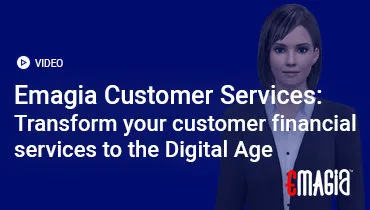In the world of business, it’s easy to get lost in the day-to-day operations. But there’s a vital, often-overlooked activity that quietly impacts your bottom line: how you communicate about money. This isn’t just about sending an invoice. It’s about a well-orchestrated, thoughtful, and professional approach to all your financial interactions. Getting this right can mean the difference between a thriving business with healthy cash flow and one constantly chasing payments. This guide will walk you through everything you need to know about mastering financial communications, from the basic principles to the latest technologies that can transform your operations.
Understanding the Core Purpose of Financial Communications with Customers and Suppliers
At its heart, the primary purpose of financial communication is to create clarity. It’s about ensuring that both your business and the other party—be it a customer or a vendor—have a crystal-clear understanding of their financial obligations and the status of their account. This clarity is the foundation of trust in any business relationship. Without it, you can encounter confusion, disputes, and, most importantly, delays in payment.
Beyond clarity, this type of communication serves several other critical functions. It acts as a formal record of transactions, which is essential for legal compliance and for resolving future disputes. It also helps to maintain a positive, professional image. A company that communicates clearly, promptly, and respectfully about money shows that it is organized, trustworthy, and values its relationships.
The Importance of Precision in Financial Messaging
Precision is paramount. Every number, every date, and every name must be absolutely correct. A single misplaced digit in an invoice number or an incorrect due date on a statement can cause a ripple effect of problems. It can lead to a customer questioning the legitimacy of a bill, which then requires your staff to spend time investigating and correcting the error. This not only wastes time but can also erode the customer’s confidence in your business. The goal is to make it as easy as possible for them to pay you, and that starts with accurate communication.
Types of Financial Correspondence for Effective Business Management
Financial communications come in a variety of forms, each with its own purpose and best practices. Understanding when to use each one is a key part of maintaining an efficient accounting department and a positive customer experience. From the initial invoice to the final collection letter, each piece of communication builds a narrative of the customer relationship.
Invoices and Billing Statements: The First Step to Getting Paid
The invoice is the most fundamental form of financial communication. It is a detailed bill for goods or services rendered. A well-crafted invoice isn’t just a list of items; it’s a professional document that includes all the information a customer needs to pay quickly. This includes the invoice number, the date, a detailed list of services or products, the total amount due, and clear payment instructions. Providing multiple payment options and a specific due date makes it easy for the customer to act.
Automating Invoice Delivery for Improved Efficiency
In today’s digital world, many businesses have moved away from physical mail for invoices. Automated, electronic invoicing systems are now the standard. These systems can generate and send invoices automatically when a service is completed or a product is shipped. This not only saves time and money on printing and postage but also reduces human error and provides a digital trail for every transaction.
Payment Reminders and Dunning Letters: A Strategic Approach to Collections
When an invoice becomes overdue, a new type of communication is required. This is where payment reminders and dunning letters come into play. The key to this process is a strategic, escalating tone that encourages payment without alienating the customer.
The first reminder, sent just before or a few days after an invoice is due, should be friendly and helpful. It should assume the customer simply forgot to pay. The tone should be similar to: “Just a friendly reminder that your payment for invoice #123 is due soon.”
If the payment remains outstanding, a second letter is sent with a slightly more urgent tone. This might be a week or two later. It’s a bit more direct, but still professional, stating the amount overdue and offering assistance. The final letters in a collection sequence are much more firm, outlining potential consequences for non-payment, such as reporting to credit agencies or engaging a third-party collection agency. It is crucial that the tone of these letters is always compliant with fair debt collection laws.
Statements of Account: A Comprehensive View of the Relationship
A statement of account is a summary of all financial activity for a specific customer over a given period. It provides a historical overview, listing all invoices, payments, and credits. This can be especially useful for customers with multiple transactions, as it gives them a single, consolidated view of their standing. Sending these regularly, perhaps monthly or quarterly, helps prevent surprises and gives the customer a chance to spot any discrepancies early.
Dispute Resolution and Other Important Letters
Not all communications are about collecting money. When a customer has a question or a dispute about an invoice, a prompt and professional response is essential. This is where dispute resolution letters or emails come in. These messages should be calm, empathetic, and focused on finding a quick and fair resolution. Other important forms of communication include payment acknowledgments, credit notes, and debit notes, each serving a specific purpose in the financial lifecycle.
Best Practices for Writing Professional Financial Communications
The quality of your financial correspondence reflects directly on your business’s professionalism. Following these best practices will help you build trust, reduce friction, and improve the speed of payments.
Crafting Clear and Concise Subject Lines
In the world of email, the subject line is your first and most important point of contact. A vague subject line like “Follow Up” is likely to be ignored. Instead, use a clear and specific subject line that includes the purpose of the email, the company name, and an invoice or account number. For example: “Invoice #12345 from [Your Company] is now 15 days overdue” is far more effective.
The Art of Using the Right Tone
The tone of your communication should always be respectful and professional, regardless of the situation. For early payment reminders, a friendly and helpful tone is best. As the situation escalates, the tone can become firmer, but it should never be rude or threatening. A firm but fair tone encourages action without destroying the business relationship.
Building a Solid Foundation with Templates and Standardization
To ensure consistency and efficiency, it’s a great idea to create a set of standardized templates for your various types of communications. These templates can be used for invoices, statements, and dunning letters. Having pre-written, legally-vetted text ensures that every message is professional and includes all the necessary information. It also prevents your team from having to write each letter from scratch, saving a massive amount of time.
Leveraging Technology for Strategic Financial Correspondence Management
Managing all these communications manually can be a full-time job. This is why more businesses are turning to technology to automate and streamline their processes. There are a variety of tools and platforms available that can make your financial communications more efficient and effective.
How Emagia Helps Businesses Master Financial Communications
With the increasing complexity of modern business, managing financial correspondence can become a massive, time-consuming task. This is where advanced platforms like Emagia come in to revolutionize your accounts receivable processes. Emagia provides an intelligent, automated solution that handles everything from invoice delivery to strategic collection efforts, all while maintaining a professional and compliant approach.
Emagia’s platform can automatically generate and send invoices, statements, and payment reminders based on predefined schedules and customer behaviors. It uses AI-powered analytics to identify which customers are most likely to pay late, allowing you to tailor your communication strategy for maximum effectiveness. The system also tracks all communications in a single, centralized location, providing a complete audit trail for every interaction. This eliminates the need for manual record-keeping and ensures that your team always has access to the most up-to-date information. With Emagia, you can transform your financial communications from a reactive, manual effort into a proactive, strategic advantage that significantly improves cash flow and strengthens customer relationships.
Frequently Asked Questions About Financial Correspondence
What is the difference between an invoice and a statement of account?
An invoice is a request for payment for a specific transaction or service. A statement of account, on the other hand, is a summary of all invoices, payments, and credits over a specific period, giving a snapshot of the customer’s total balance.
Is it better to use email or physical mail for financial communications?
Generally, email is faster, more cost-effective, and easier to track. However, for certain formal notices, such as late-stage dunning letters, physical mail may still be used to ensure legal compliance and a more formal record.
How often should I send payment reminders?
The frequency of reminders depends on your business policy and the relationship with the customer. A common approach is a “pre-due date” reminder, followed by a series of escalating reminders at regular intervals (e.g., 7, 15, and 30 days overdue).
What legal considerations should I be aware of when sending collection letters?
When sending collection letters, it is vital to be aware of and comply with laws such as the Fair Debt Collection Practices Act (FDCPA) in the United States, which governs how third-party debt collectors can interact with consumers. Even if you are a first-party creditor, maintaining professional and non-threatening communication is the best practice.



